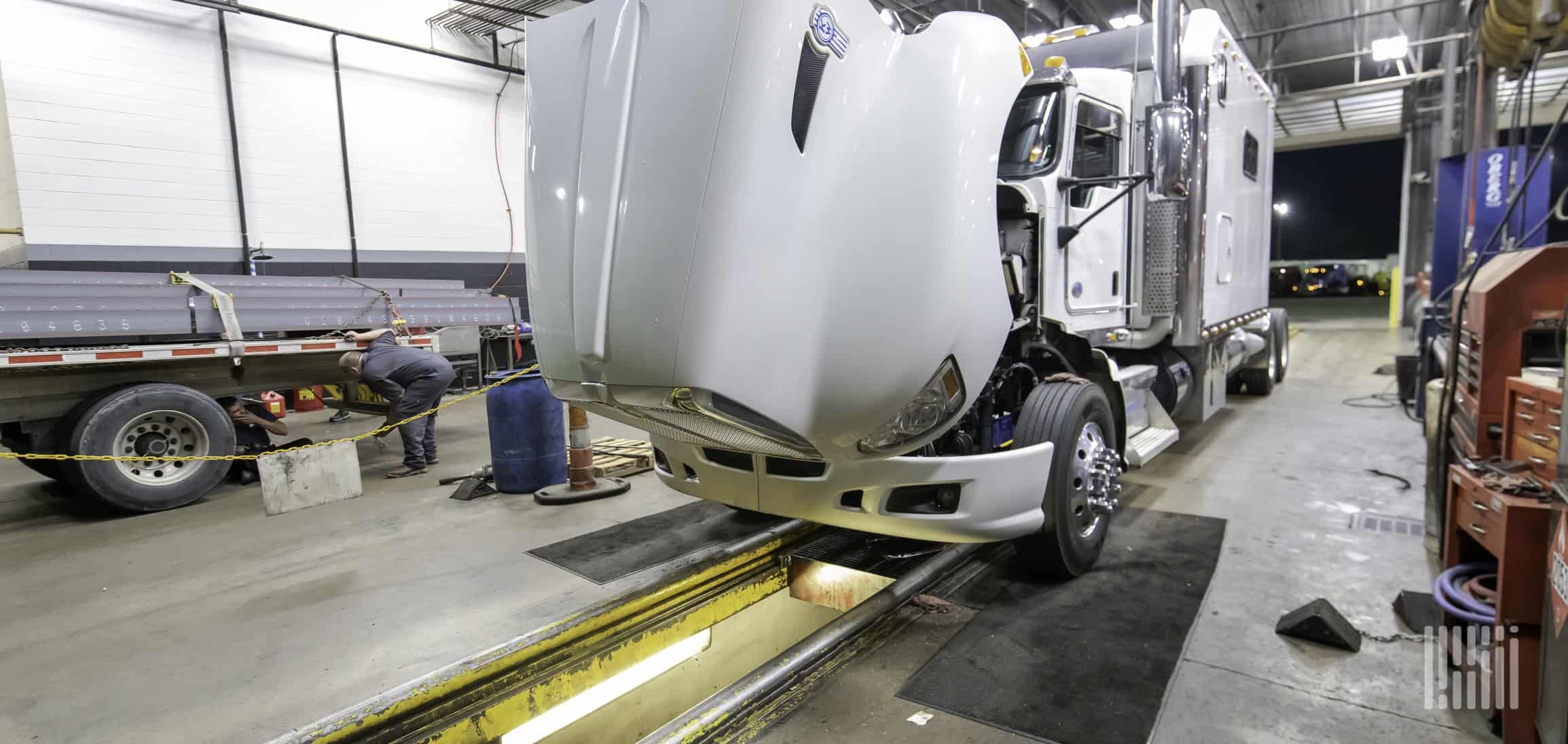The perfect marriage of metadata logging and GPS technology, telematics allows for the long-distance sharing of onboard vehicle information. From tire pressure to live speed reporting, it is the big brother of the trucking industry for fleet managers. Telematics allows maintenance and operations departments to deep dive into the working order of vehicles without a visit to the shop.
Let’s take a closer look at the defect and maintenance detection capabilities offered by telematics. And when you’re finished reading, check out the other articles in our ‘Truck fleet maintenance management’ series:
- How telematics catches truck defects & maintenance issues
- How to create a fleet maintenance program
- Diesel truck maintenance checklist
- Best fleet maintenance management solutions
What is truck telematics?
Telematics refers to technology that allows trucks to wirelessly transmit data in real time via cellular connectivity. It integrates applications, sensors, connectivity, and computer processing capabilities to collect, analyze, and wirelessly deliver large amounts of data to and from vehicles. At its core, it connects vehicles to the internet and enables continuous communication with a remote server or platform.
Data gathered through a vehicle telematics system can include location tracking from GPS, vehicle usage metrics like mileage and fuel consumption, driver behavior insights, sensor data from engine and other vehicle systems, and more.
This data can then be used for various applications focused on vehicle and fleet management, asset tracking, navigation and routing optimization, driver safety, predictive maintenance, fuel savings, regulatory compliance, usage-based insurance, and accident alerts.
Key capabilities offered by telematics technology typically include real-time GPS fleet tracking, dashboard reporting for analytics, geofencing, driver coaching tools, electronic logging of hours served, and integration via API’s with existing transportation management systems. It delivers data insights to help improve operational efficiency, safety, and cost savings.
How do telematics work?
Using the accelerometer and GPS to track vehicle movement, telematics logs speed, starts and stops. While this is happening, the vehicle’s diagnostic system sends information collected via sensor to the cloud, including, for instance:
- Mileage
- Fuel economy
- Distance
- Sudden stops
- Battery power
Once in the cloud, your fleet management tool puts the information into context so you can easily flag problem areas and schedule checkups.
4 ways telematics saves fleets money
Telematics by itself can help uncover problem areas with the vehicles in your fleet, but with the adjunct power of the right fleet management software, it will help with the following.
Reports on air pressure
The number one cost of fleets in the past has been due to tire inflation pressure. This affects fuel economy. With telematics, all of this is reached in real time without having to check your tires manually.
According to the FMCSA, only 15% of tire-related incidents happen suddenly, which means 85% of the time the problem occurs over time without notice.
According to the U.S. Department of Energy (DOE), every dip of one psi in tire air pressure reduces gas mileage by 0.2%, which will add up.
Monitor fuel economy
Outside of tire pressure, diesel exhaust fuel (DEF) levels can cause you to use fuel faster and other costly emissions violations. If left unchecked, DEF can cause major engine damage, which is an extreme cost.
If your fleet seems like it’s still using too much fuel, but you’ve optimized and performed preventative maintenance for DEF, telematics can actually show you if your fleet is a victim of fuel theft. Though it can’t stop it, you can track the trends of where and when this is happening to help your drivers keep a watchful eye on certain pit stops.
Electrical issues and battery consumption
Though this is more thinking towards the future, electric big rigs are coming, and even a few are here. Batteries can be upwards of 50% of the cost of an electric vehicle. Battery Management Systems don’t store usage data when offline; telematics always does.
This will become far more important as the new EV routes are launched over the next few years. Truck charging stations may attract billions in grants.
Track faulty wiring problems simply from the absence of information.
Harsh braking and accelerating
Monitor behavior to determine if the problem is due to road hazards, weather conditions, a vehicle problem or driving issue. Harsh braking causes overheating and drastically diminishes the lifespan of the brakes.
On the other hand, semi-truck drive trains aren’t built to handle harsh acceleration, especially with a full load.
Along with saving money on maintenance, many insurance companies use telematics information for safe driving discounts of up to 40%.
Telematics keep the wheels going round
Acting as a beacon for a fleet manager’s ground control, telematics saves you precious time by canonically giving you empirical data you can weigh against the company and industry norms. Proactive maintenance is almost always better than reactive maintenance as it will keep you on the road rather than getting you back on it, and telematics will take the guesswork out of when and where you need to take a closer look.
FAQ
Telematics in a vehicle refers to technology that wirelessly transmits data to and from the vehicle, usually via cellular connectivity. This allows real-time monitoring, communication, and more advanced analytics regarding vehicle usage.
The benefits of telematics include improved driver safety through alerts and feedback, as well as operational efficiencies like better fleet and route management, fuel savings, and predictive maintenance. Telematics data also aids regulatory compliance.
Yes, most telematics systems do track vehicle location via GPS which allows for live location monitoring, geo-fencing, automated mileage logging, and location based alerts and reports. However, privacy settings can restrict the detail of data shared. GPS and OBD to track a vehicle’s geographic and internal status and working order remotely.



